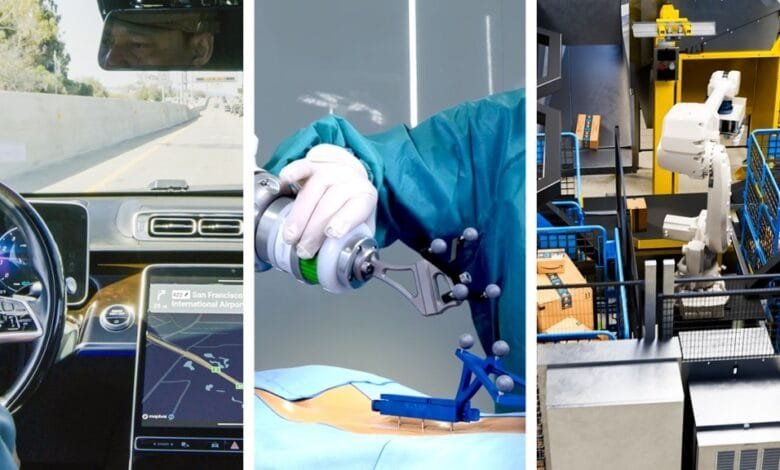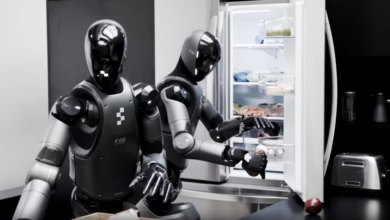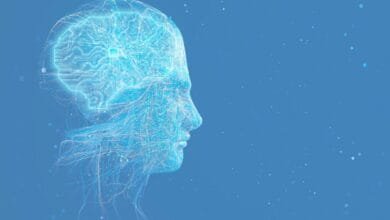Nvidia Advances Humanoid Robotics with Cloud Power

▼ Summary
– Nvidia unveiled Isaac GR00T N1.5, GR00T-Dreams, and Blackwell systems at Computex 2025 to accelerate humanoid robotics development.
– Major robotics firms like Boston Dynamics and Agility Robotics are adopting Nvidia’s Isaac platform for humanoid robot advancements.
– GR00T-Dreams generates synthetic motion data to train robots, reducing reliance on costly real-world data collection.
– GR00T N1.5 improves adaptability and task success rates, with deployment on Jetson Thor planned for later this year.
– Nvidia introduced simulation tools like Isaac Sim 5.0 and Cosmos Reason to enhance synthetic data generation and robot training pipelines.
Nvidia is pushing the boundaries of humanoid robotics by introducing groundbreaking cloud-powered tools designed to accelerate development. The company recently unveiled updates to its Isaac GR00T platform at Computex 2025, including an enhanced foundation model for reasoning, synthetic motion data generation, and Blackwell-powered systems to streamline robotics innovation.
Leading robotics firms like Agility Robotics, Boston Dynamics, and XPENG Robotics are already leveraging Nvidia’s Isaac platform to refine their humanoid designs. According to Nvidia CEO Jensen Huang, the fusion of physical AI and robotics will drive the next industrial revolution, with Nvidia providing the essential building blocks for every stage of development.
Closing the Data Gap with Synthetic Motion Generation
One of the biggest hurdles in robotics is gathering enough real-world training data. Nvidia’s Isaac GR00T-Dreams tackles this challenge by generating synthetic motion data—essentially creating virtual scenarios where robots can learn new behaviors. Using a single input image, the system produces videos of robots performing tasks in simulated environments. These videos are then broken down into action tokens, compressed data packets that teach robots how to execute movements efficiently.
This approach complements GR00T-Mimic, another Nvidia tool that enhances existing data rather than generating it from scratch. Jim Fan, Nvidia’s AI director, explained that the company’s strategy revolves around solving the “three-computer problem”: simulation (OVX), model training (DGX), and real-world deployment (HX). By integrating these systems, Nvidia enables unprecedented scalability in robotic learning.
Faster, Smarter Humanoid Models
The latest iteration, GR00T N1.5, was developed in just 36 hours using synthetic data—a process that would have taken months traditionally. This upgrade improves adaptability, allowing robots to recognize objects via voice commands and handle complex tasks like sorting and material transport. The model will soon be available on Jetson Thor, Nvidia’s upcoming robotics platform.
Early adopters like NEURA Robotics and Foxlink are already testing GR00T N1.5 for applications ranging from industrial automation to household assistance. Meanwhile, Nvidia Research continues refining the model’s visual-language backbone, ensuring better compliance with user instructions.
Simulation Tools for Rapid Development
To further bridge the gap between virtual and real-world training, Nvidia introduced several simulation frameworks:
- Cosmos Reason – A world foundation model that improves synthetic data accuracy.
- Isaac Sim 5.0 – An open-source platform for generating and testing robotic behaviors.
- Isaac Lab 2.2 – A learning framework with new evaluation environments.
Companies like Boston Dynamics and Foxconn are using these tools to speed up training pipelines, while Skild AI applies them to develop general-purpose robot intelligence.
Powering the Future with Blackwell Systems
For developers needing massive computational power, Nvidia’s Blackwell-based RTX PRO 6000 workstations and servers offer a unified architecture for training, simulation, and deployment. Partners like Dell, Lenovo, and HPE are rolling out Blackwell-powered systems, with cloud options like DGX Cloud delivering up to 18x faster data processing.
With these advancements, Nvidia is not just shaping the future of robotics—it’s building the infrastructure to make humanoid AI a reality.
(Source: VentureBeat)


